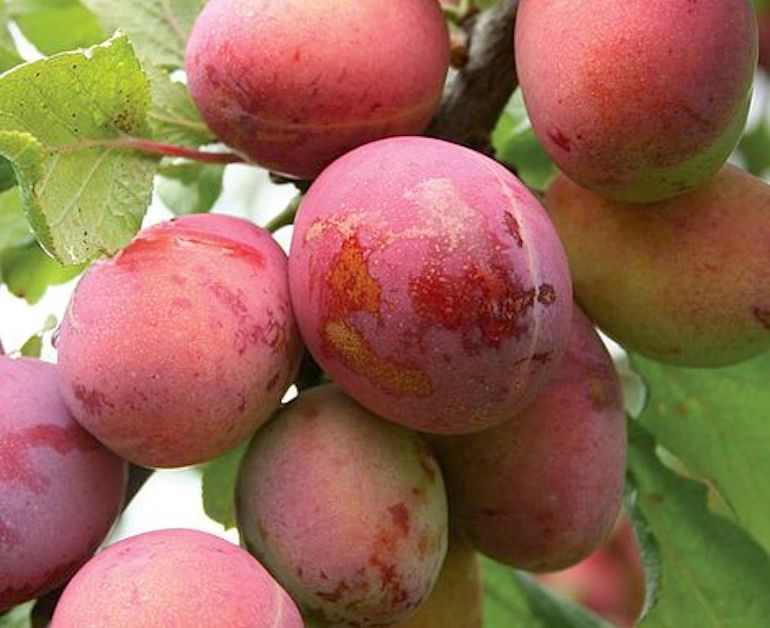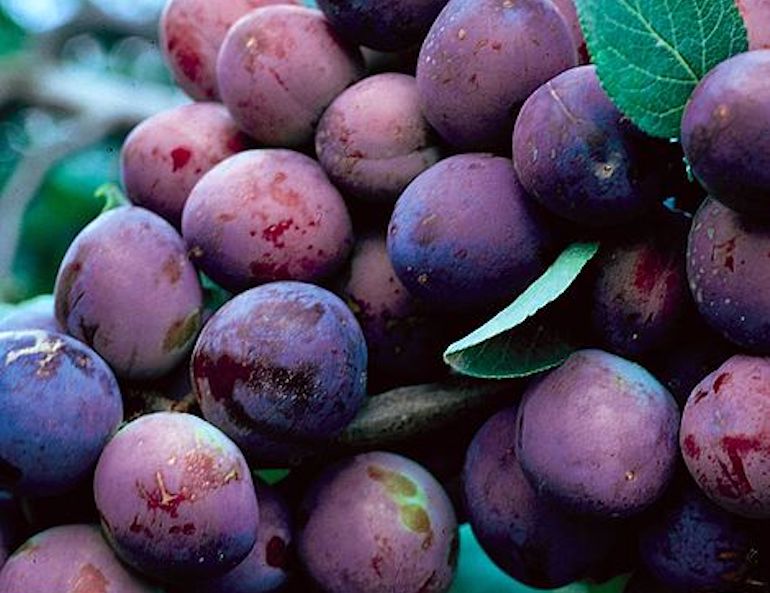
How to prune plum trees
Plums trees are easy to grow, and with a little care and attention, produce bumper crops of juicy fruit. In fact, if you don’t thin them out, your plum tree may crop so heavily that the branches snap under their own weight! Here’s how and when to prune your plum trees.
When to prune a plum tree

Never prune plum trees in winter as they're more susceptible to disease then
Image: Plum 'Opal' from T&M
The most important thing to remember about pruning a plum tree is timing. They’re susceptible to silver leaf disease, which enters through pruning wounds. To lessen the risk, always use sharp secateurs or a pruning saw to get a clean cut, and never prune your plum during winter – wait until early spring or mid-summer.
How to prune a plum tree

An award winning plum variety with good frost resistance
Image: Plum 'Czar' from T&M
Unlike apples and pears, plums don't need a lot of regular pruning once the shape has been established.
However, getting the final shape for a free-standing bush plum usually takes two or three years, depending on what type of tree you plant.
An unfeathered maiden – a single stem without side shoots, will take the longest. Alternatively, plant a feathered maiden – a tree that already has strong side shoots from the main stem.
Unfeathered maidens take three years to prune into shape:
- In the first year, cut back an unfeathered maiden’s single stem to a bud that’s around 75cm above ground, making sure there are at least three or four good buds below it.
- In the second year, choose the best shoots, between three and five, and remove any others. This should leave a strong framework. Shorten the selected shoots by half by pruning to an outward-facing bud.
- In the third year, cut back the previous year’s growth on the main branches by a third and remove any upright shoots at the top of the tree. You should now have a framework of around eight branches.
- Don’t prune any side branches unless they are crossing or growing inwards.
- In the first year, cut back the leader or central stem to just above the top branch. There should be three or four shoots below and they need cutting back by about half to an outward-facing bud. Remove any lower branches.
- In the second year, cut back the previous year’s growth on the main branches by a third, and remove any upright shoots at the top of the tree.
- Once the shape is established, pull up any suckers that appear from the rootstock and rub off any buds that appear on the trunk.
- Remove any diseased, dead or damaged growth, and take out any branches that cross to maintain a clear and open framework.
Feathered maidens take two years to prune into shape:
Keep an eye on your plum tree once fruit begins to appear, thinning it out if necessary to avoid the branches breaking under the weight of a heavy crop. We hope you now have all the information you need to prune your plum trees successfully and enjoy delicious fruit for many years to come.
See all pruning guides
Individual guides
Flower & Shrubs
- Pruning Buddleja
- Pruning Camellias
- Pruning Clematis
- Pruning Fuchsias
- Pruning Hydrangeas
- Pruning Hypercium - St Johns Wort
- Pruning Lavender
- Pruning Magnolias
- Pruning Passion Flowers
- Pruning Rhododendron
- Pruning Ribes Sanguineum
- Pruning Rosemary
- Pruning Roses
- Pruning Tree Peonies
- Pruning Wisteria
- Pruning Asparagus
- Pruning Blueberries
- Pruning Goji Berries
- Pruning Honeyberries
- Pruning Raspberries
- Pruning Apple trees
- Pruning Box and Yew trees
- Pruning Catalpa trees
- Pruning Christmas trees
- Pruning Olive trees
- Pruning Patio Fruit trees
- Pruning Pear trees
Fruit & Veg
Trees

Written by: Mandy Bradshaw, the Chatty Gardener
Cotswold-based Garden Media Guild member, Mandy Bradshaw, is also known as the Chatty Gardener. Passionate about gardening and writing, her beginnings are in football reporting for her primary school, and Mesembryanthemum planting with her mother. Winner of the 2018 Property Press Awards 'Garden Journalist of the Year', she writes for not only her own blog but also a range of newspapers, magazines and other gardening and non-gardening sites.Banner image: Calek/ Shutterstock
Sign Up For Exclusive Special Offers




© 2024 Thompson & Morgan. All rights reserved. A division of Branded Garden Products Limited.



